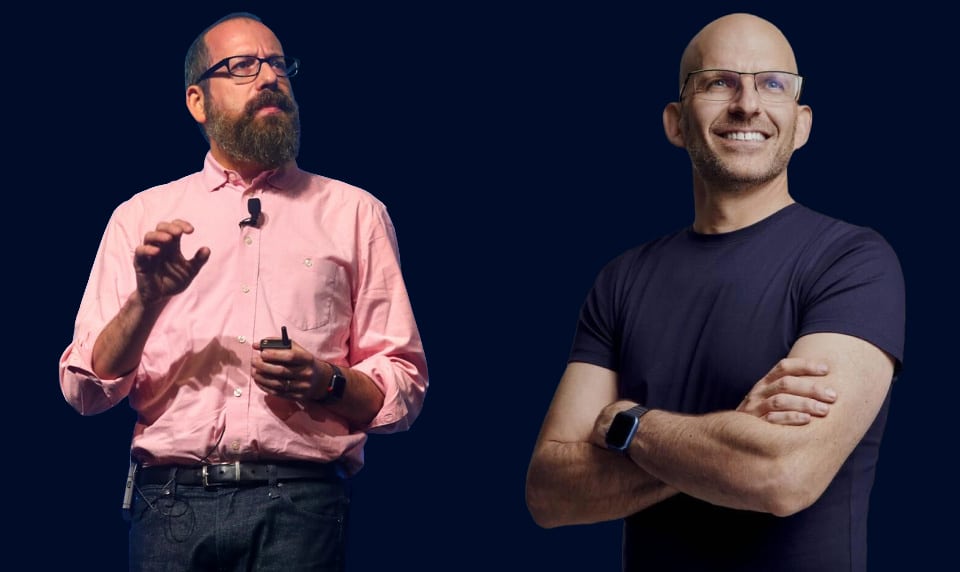Making Sure Everyone Organization-wide Works on the Right Stuff

People are working hard, but on the wrong stuff. This happens widely because teams are told what to build from their leadership, causing them lose track of what their customers want.
Organizations exist to provide some kind of value to people. Too often, though, organizations don’t have a clear understanding of who these people are or what they need. By applying an objectives and key results (OKR) framework, they have the ability to align teams around customer needs and focus them on company strategy. OKRs create clarity, help with prioritization, and most of all, help teams deliver results.
In some ways, OKRs are simple — and that simplicity is one of the things that makes OKRs so compelling. They form a simple but powerful goal-setting framework.
The first part, the objective, describes the goal. The second part, the key results, describes your measures of success in making progress toward your goal. These two pieces work together to make a simple, clear, easy-to-communicate statement.
Objectives
Objectives are the goals you set. The job of an objective is to inspire the team and provide a clear why. A good objective is inspirational, aspirational, qualitative, timeboxed, and specific. It connects people to the broader purpose of the work and is specific enough to create urgency. In our opinion, it’s also an important opportunity to describe the benefit your work will generate for your customers.
Here’s an example of an objective for a flying car company: Redefine local and regional air travel in North America to make it simpler, safer, and more accessible by the end of this decade.
This is a big objective, describing the ambition of an entire company. But OKRs work at a smaller scale too. For example, if you work in the marketing department of this company, your department’s objective might be something like this: Create broad awareness of the safety and sustainability promise of modern flying cars by the end of this year.
Objectives can express a goal at any level, from whole-organization to department to big team to small workgroup. The higher up in an organization you are, the broader, more long-term, and more strategically focused your objectives will be. The smaller your workgroup, the more narrowly defined your goals will be.
Key Results
Key results are the way you measure progress towards your goal. If objectives seem lofty (and they should), then key results are what grounds them. They give you the specific, measurable criteria that let you know if and when you’ve met your goals and allow you to judge your progress on your way. They answer the question, how do we know we’ve achieved our goal?
For the flying-car company’s objective: Redefine local and regional air travel in North America to make it simpler, safer and more accessible by the end of this decade, the key results might be:
- Deposit-paying customers sell out the wait list for first three model-year releases
- Operators cause no safety incidents during the first year of market roll-out
- At least 35 percent of local and regional travelers, both air and land-based, are regularly using our flying vehicles
These key results, taken together, tell a story: If you do all of these things, then you will achieve your objective. They also give you things to measure along the way. Is there demand for your products before they go to market? Can you deliver on your safety promise? Are local and regional travelers warming to flying cars?
Good key results measure value, and the best way to understand value is by measuring what people are doing, or doing differently, as a result of your work. In this case, the key results tell you exactly what behaviors you’re looking for: Prospective buyers showing intent to buy the vehicle; operators learning to use the vehicles in a safe manner; travelers shifting their choice of transportation towards your flying vehicles.
OKRs change the way you measure success. A typical idea of success often measures only whether an important task was completed. For example, did we launch that new flying vehicle on time? With OKRs, though, you’re looking at whether or not you created value by completing that task. You do that by looking at customer behavior. When you created your flying vehicle, did it create value for the customer? Ticking off a box only leads to success if you’ve created a valuable outcome.
Written by Jeff Gothelf and Josh Seiden.
Have you read?
Richest Billionaire Investors. Billionaire Winners. Billionaire Losers. Best Business Schools. Best Hotel Schools.
Bring the best of the CEOWORLD magazine's global journalism to audiences in the United States and around the world. - Add CEOWORLD magazine to your Google News feed.
Follow CEOWORLD magazine headlines on: Google News, LinkedIn, Twitter, and Facebook.
Copyright 2025 The CEOWORLD magazine. All rights reserved. This material (and any extract from it) must not be copied, redistributed or placed on any website, without CEOWORLD magazine' prior written consent. For media queries, please contact: info@ceoworld.biz








